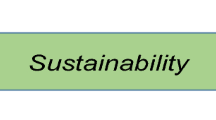Abstract
The city of Flint, Michigan switched its water source in April, 2014, and, to reduce costs, anti-corrosion agents were omitted from water treatment. Consequently, lead leached into pipes, contaminating the water supply and exposing Flint’s children to lead well beyond safety standards. The event became known as the Water Crisis, and now dominates Flint’s public image. This paper portrays a project that arose out of one community response to the situation in Flint, the provision of quality child-care to families living in the affected areas by the University of Michigan-Flint. As part of this effort, a group of Early Childhood faculty and center head teachers participated in a Teaching Circle (Hutchings in Making teaching community property, American Association of Higher Education, Washington, DC, 1996), in which we read and studied the book, Reggio tutta: A guide to the city by the children (Reggio Children, Reggio Emilia, 2000) and teachers were inspired to share questions with their classes. Our analysis of the Teaching Circle and those projects uses children’s perspectives and interpretations of campus and the city to focus on the beauty and resourcefulness of the Flint community. Seeing the city of Flint through the children’s eyes is a remarkably joyful and uplifting experience.







Similar content being viewed by others
Notes
All children’s names included are pseudonyms.
References
Bickart, T. S., Jablon, J. R., & Dodge, D. T. (1999). Building the primary classroom: A complete guide to teaching and learning. Washington, DC: Teaching Strategies and Heinemann.
Bonilauri, S., & Filippini, T. (2000). The city: Images, ideas, and theories. In R. Children (Ed.), Reggio tutta: A guide to the city by the children (pp. 138–145). Reggio Emilia: IT, Preschools and Infant-Toddler Centers - Istituzione of the Municipality of Reggio Emilia.
Bransford, J. D., Brown, A. L., & Cocking, R. R. (2000). How people learn: Brain, mind, experience, and school. Washington, DC: National Academy Press.
Castagnetti, M. (2014). Unpublished remarks from her address at the Michigan Inspirations Study Tour. Reggio Emilia, Italy: Malaguzzi International Center.
Copple, C., & Bredekamp, S. (2009). Developmentally appropriate practice in early childhood programs serving children from birth through age 8 (3rd ed.). Washington, DC: National Association for the Education of Young Children.
Doyle., (2011). Learner-centered teaching: Putting the research on learning into practice. Sterling, VA: Stylus.
Edwards, C., Gandini, L., & Forman, G. (Eds.). (2012). The hundred languages of children: The Reggio Emilia experience in transformation (3rd ed.). Santa Barbara, CA: Preager.
Gopnik, A. (2009). The philosophical baby: What children’s minds tell us about truth, love, and the meaning of life. New York: Farrar, Straus and Giroux.
Greene, M. (1988). The dialectic of freedom. New York: Teachers College Press.
Greene, M. (2011). A conversation. Session presented at creativity, play and imagination across disciplines. Teachers College, Columbia University, New York.
Hutchings, P. (1996). Making teaching community property. Washington, DC: American Association of Higher Education.
Infant-Toddler Centers and Preschools Istituzione of the Municipality of Reggio Emilia. (2010). Indications: Preschools and infant-toddler centers of the Municipality of Reggio Emilia. Reggio Emilia, IT: Reggio Children.
McMillan, D. W., & Chavis, D. M. (1986). Sense of community: A definition and theory. Journal of Community Psychology,14(1), 6–23.
Packer, M. J., & Addison, R. B. (Eds.). (1989). Entering the circle: Hermeneutic investigation in psychology. Albany, NY: State University of New York Press.
Preschools and Infant-Toddler Centers - Istituzione of the Municipality of Reggio Emilia. (2000). Reggio tutta: A guide to the city by the children. Reggio Emilia: Reggio Children.
Preschools and Infant-Toddler Centers - Istituzione of the Municipality of Reggio Emilia. (2011). Wonder of learning: The hundred languages of children. Reggio Emilia: Reggio Children.
Rinaldi, C. (2000). In Reggio tutta: A guide to the city by the children (pp. 10–11). Reggio Emilia: Reggio Children.
Rinaldi, C. (2006). In dialogue with Reggio Emilia: Listening, researching and learning. New York: Routledge.
Samaras, A., Freese, A. R., Kosnik, C., & Beck, C. (Eds.). (2008). Learning communities in practice (Vol. 4). New York: Springer.
Valentino, R. (2018). Will public pre-K really close achievement gaps? Gaps in prekindergarten quality between students and across states. American Educational Research Journal,55(1), 79–116.
Van Hoorn, J., Nourot, P. M., Scales, B., & Alward, K. R. (2011). Play at the center of the curriculum. Chapter 6. Play as a tool for assessment (5th ed.). Boston: Pearson Education.
Vecchi, V. (2010). Art and creativity in Reggio Emilia: Exploring the role and potential of ateliers in early childhood education. New York: Routledge.
Vygotsky, L. (1978). Mind in society. Cambridge, MA: Harvard University Press.
Acknowledgements
We gratefully acknowledge support for this work in the form of a Marion Wright Teaching Circle Grant from the Thompson Center for Teaching and Learning at University of Michigan-Flint, and from the head teachers, teachers and children of the School of Education and Human Services Early Childhood Development Programs.
Author information
Authors and Affiliations
Corresponding author
Additional information
Publisher's Note
Springer Nature remains neutral with regard to jurisdictional claims in published maps and institutional affiliations.
Rights and permissions
About this article
Cite this article
Dorfman, A.B., Kenney, C.K. Flint, Michigan Through Children's Eyes: Using a Teaching Circle and Projects to Re-envision a City. Early Childhood Educ J 48, 573–584 (2020). https://doi.org/10.1007/s10643-020-01031-x
Published:
Issue Date:
DOI: https://doi.org/10.1007/s10643-020-01031-x




